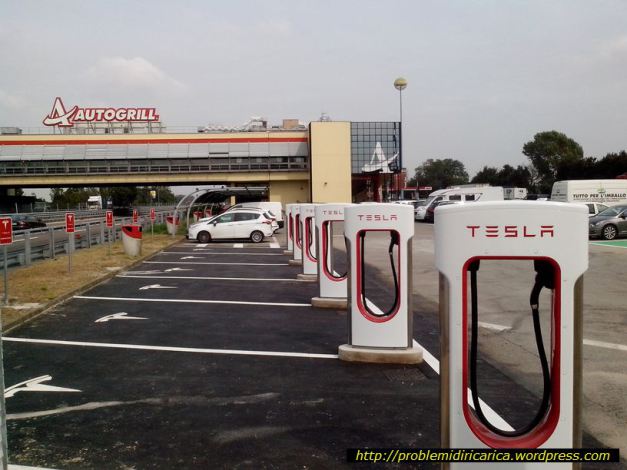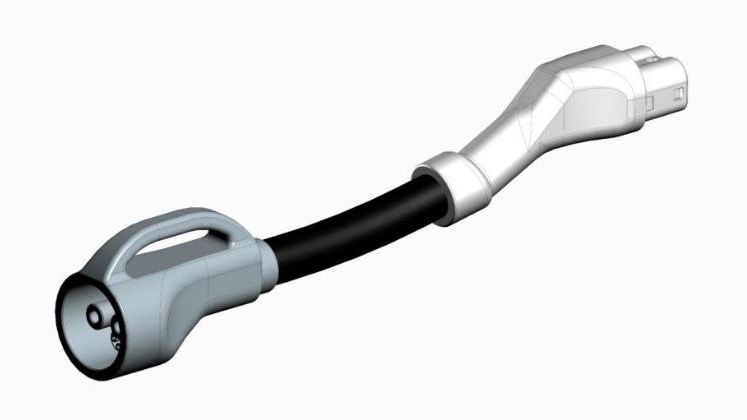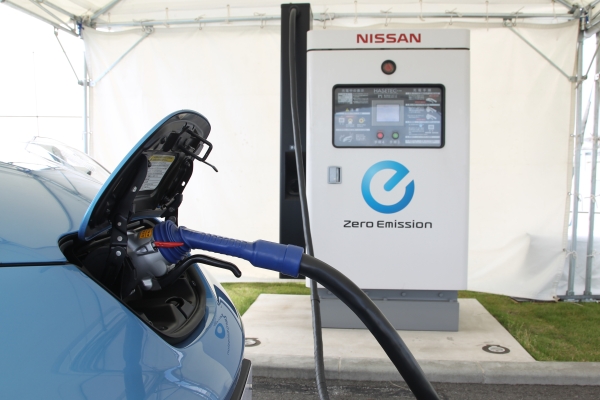Electric cars still lack a unified standard for DC fast charging, but the latest version of the CHAdeMO charging standard comes closer to achieving that goal.
CHAdeMO 3.0 is being co-developed with the China Electricity Council, and will operate under China's GB/T communications standard, the CHAdeMO Association said last week in a press release.
The association confirmed backward compatibility with GB/T adding that CHAdeMO 3.0 might "possibly" be backward compatible with the Combined Charging Standard (CCS) as well.
CHAdeMO and CCS are the two major standards used by established automakers for the United States market. Although Japanese and Korean automakers were preferring CHAdeMO, more of them have jumped to the CCS side with U.S. and European automakers in the past couple of years—partly because the high-power charging build-out, from Electrify America, for instance has included more CCS connectors.

Tesla Supercharger site in Dorno, Italy, photo by problemidiricarica.wordpress.com/
Tesla developed its own Supercharger standard, but the automaker's electric cars have been able to use CHAdeMO charging stations in the U.S. for years, as a backup to the Supercharger network. Last summer, Tesla enabled CHAdeMO charging for the Model 3 (and now, by extension, the Model Y).
Besides potential compatibility with other charging standards, CHAdeMO 3.0 also boasts a new connector, a smaller-diameter cable with liquid cooling, and removal of the locking mechanism. It also enables charging power of up to 500 kilowatts.
Charging hardware providers have lagged in rolling out CHAdeMO hardware with more than 50 kw—even in China, with its massive electric-car market—so this might give them a needed push.

CHAdeMO 3.0
CHAdeMO got a strong head start over CCS, thanks in part to the launch of the Nissan Leaf and Nissan's desire to cultivate charging infrastructure for the car.
Although CCS charging outlets now outnumber CHAdeMO outlets in the U.S., CCS didn't pass CHAdeMO until early last year.
Aligning with China's GB/T and potentially aiming for backward compatibility for CCS may be the best bet for survival of CHAdeMO as a standard, but other factors could boost it.
Unlike CCS, CHAdeMO was designed for bidirectional charging, allowing cars to discharge electricity back into the grid, Electrek noted. Japanese versions of the Leaf and Mitsubishi Outlander PHEV are currently sold with this feature.

50 Kw Leaf Charger
Bidirectional charging has been discussed as a way for electric cars to provide backup power to buildings, or to "balance the grid" by absorbing excess electricity during times of low demand, then discharging it when needed. While some demonstrations have been conducted in the U.S., this would likely require a significant regulatory overhaul for widespread use.
India is also expected to join Japan and China in CHAdeMO development, Electrek noted. South Korea and several Southeast Asian countries have also expressed "strong interest" in joining the development effort, the CHAdeMO Association said.
At last check, earlier this year, Nissan told Green Car Reports that it has no intent to change standards. Whether a next-generation CHAdeMO will be enough to pull other automakers away from CCS is anybody's guess at this point.












